
Cedervale Cookies And Cream is an Australian Stock Horse filly with a chestnut sire and a brown dam. When she was born she had a visible light patch covering most of the near side of her rump and extending down her leg to below her hock. In places the light patch just crosses over her backbone to the off-side too.
She’s nearly 2 now and the light patch has become even more obvious. The mature coat colour on most of her body is brown, while the light patch is a pale gold colour. Most of her tail is in the light patch too, and there are pale streaks down both sides of her tail where the hair appears to be lighter than normal.
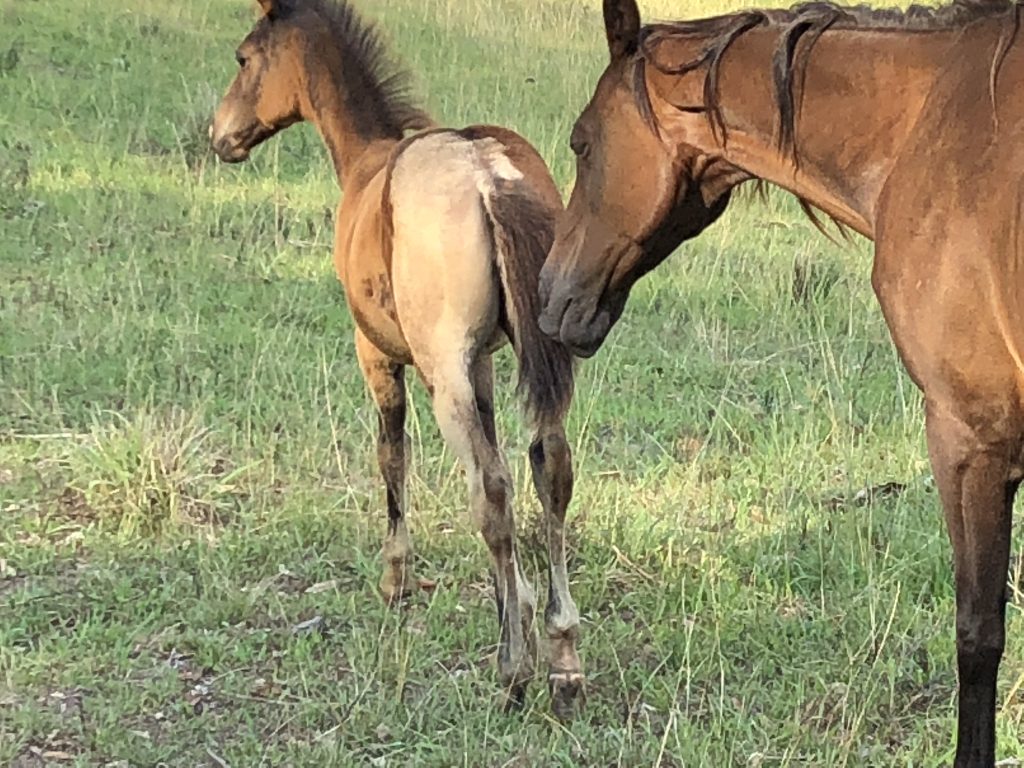
The light patch looks similar to either a cream dilution (a buckskin patch) or a champagne dilution (an amber champagne patch).
What caused the light patch?
There are two possible explanations:
- A somatic mutation
- Chimerism
A somatic mutation is a change to the DNA sequence that happens in a single stem cell in a developing embryo. Most of the cells in the foal carry the original DNA sequence, but the cells that are descended from the one with the changed DNA sequence also carry the same change.
In contrast, chimerism happens when two sibling embryos merge with one another very early on to become a single animal. In horses this can be two colts, two fillies or a colt and a filly, which can result in an intersex horse. If the two two siblings are different colours you will generally see patches or stripes of the different colours.
Both of these are rare genetic events so there’s a list of articles at the end to read if you’d like to know more about them. Some were written for discussing the same phenomena in people but they apply equally to all mammals.
What did we do to find out what it was?
Cedervale Cookies and Cream was a fantastic horse to work with from a lab perspective. Her light coloured patch included most of her tail. This made it easy to get DNA from the light patch (from follicles of light coloured tail hair) and DNA from the dark patch (from follicles of normal mane hair). We also requested light body hair.
First of all, we had a look under a microscope to see if there was a difference between the normal hairs with no dilution and those from the dilute patch.
This first picture is normal dark mane hair. The black pigment is strong and distributed throughout the whole hair shaft.
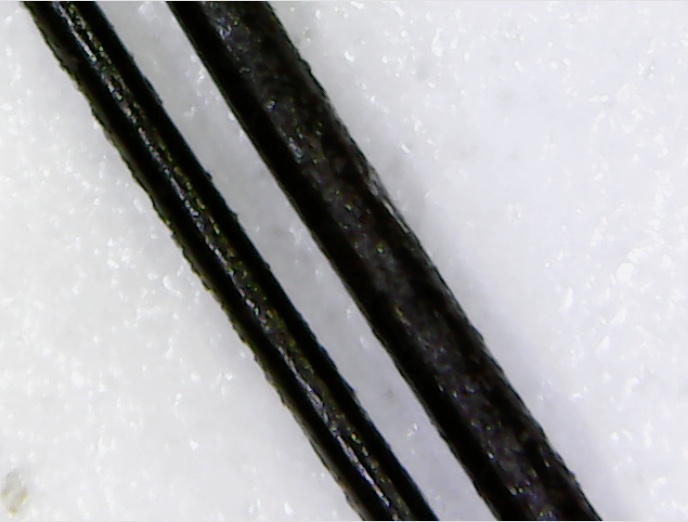
This second picture is the diluted tail hair. There’s a lot of difference from hair to hair in this sample. Some hairs have almost no pigment. We can also see that the pigment is unevenly distributed within the hairs: there are dark spots and sections in the middle hair, and light patches even in the darkest hair.
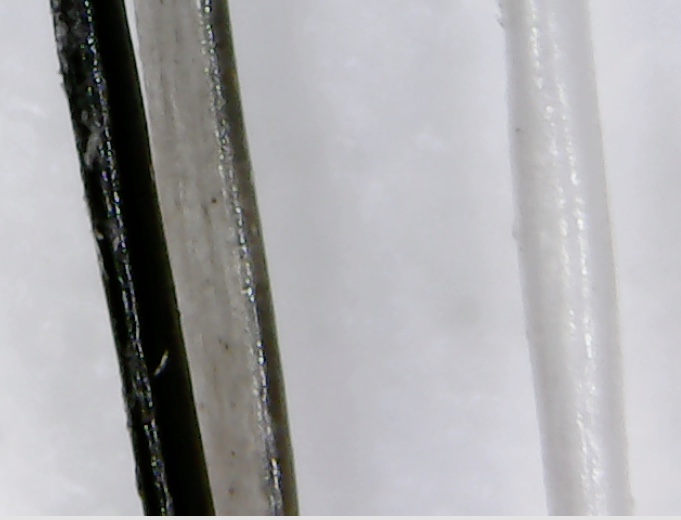
This third picture shows magnified light body hairs as opposed to tail hairs. Once again we can see variation from hair to hair, with some having almost no pigment at all. Where there is pigment it is bit uneven and spotty. Black pigment and red pigment both seem to be affected, with some hairs looking silvery grey while others have light yellow or brown tones.

We learnt a few things from this look at the hairs.
- The tail hairs are affected in the same way that the light body hairs are, so we can use DNA from tail hair follicles for our analyses
- The distribution and possibly also the creation of both red and black pigment is impaired in the dilute part of Cedervale Cookies And Cream. This is similar to other dilutions like cream, champagne and silver.
The next stage was to move on to DNA testing. We tested DNA from the light and dark parts for champagne and cream. We weren’t expecting them to come back positive because neither parent is cream or champagne. Sure enough, both the light part and dark part were negative for these well-known dilutions.
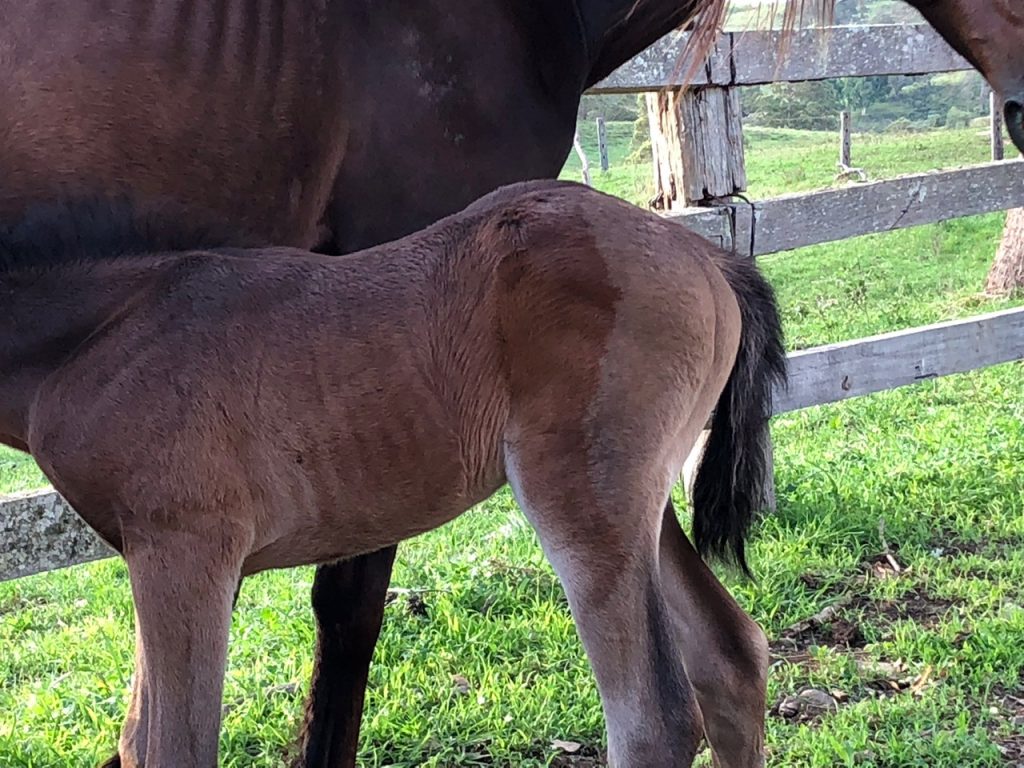
We also ran parentage profiles on DNA from the light and dark parts of Cedervale Cookies and Cream. If Cedervale Cookies and Cream was a chimera the profiles would not match, because the DNA would come from two non-identical siblings rather than a single horse.
The profiles from both different sections were a match. Cedervale Cookies and Cream is not a chimera.
We concluded that Cedervale Cookies and Cream has a somatic mutation.

Her mutation is most likely a dominant dilution mutation like the well-known champagne and cream dilutions, though it is not either one of those. It is not likely that she will pass this mutation on to her foals, unless the region with the somatic mutation extends through her internal organs to include one or both of her ovaries. It is also not likely to affect her health or performance.
We would love to go on and identify the actual change to the DNA in this somatic mutation. Unfortunately it’s just too hard to guess what gene is involved. It seems more like champagne than cream because it has a similar effect on both black and red pigments. Look at an the illustrations of amber champagne here: http://www.chboa.com/classifications/amber.html
Following up on that hypothesis that it may be similar to champagne, I asked her owner to send through one last photo of the skin under Cedervale Cookies and Cream’s tail. Champagne horses have lighter, freckled skin. I was hoping to see that this filly’s skin in the light patch was also lighter and freckled. However the skin appeared fairly normal. It may be a bit lighter than usual or that could be my imagination – I’m just not sure! If any amber champagne owners want to help out with an opinion we would love to hear it.
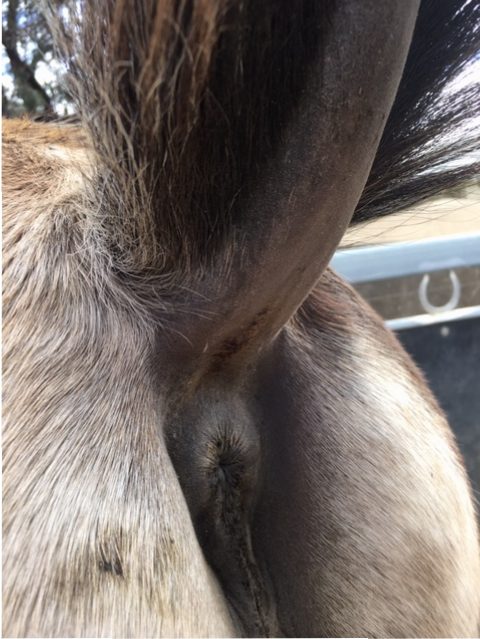
More about chimerism:
https://en.wikipedia.org/wiki/Chimera_(genetics)
https://science.howstuffworks.com/life/genetic/chimerism-be-own-twin.htm
More about somatic mutations:
https://www.britannica.com/science/somatic-mutation
https://ib.bioninja.com.au/standard-level/topic-3-genetics/33-meiosis/somatic-vs-germline-mutatio.html